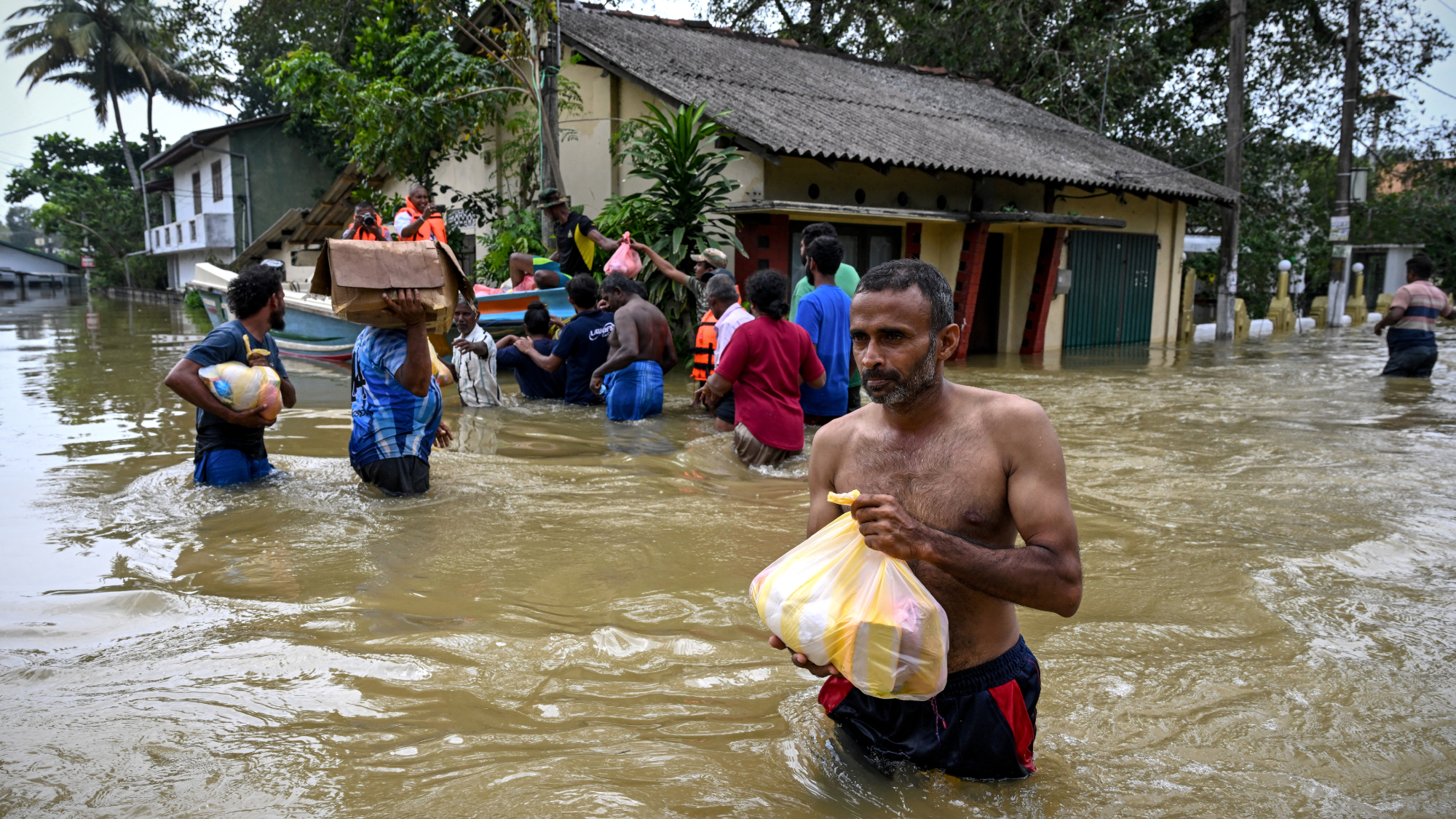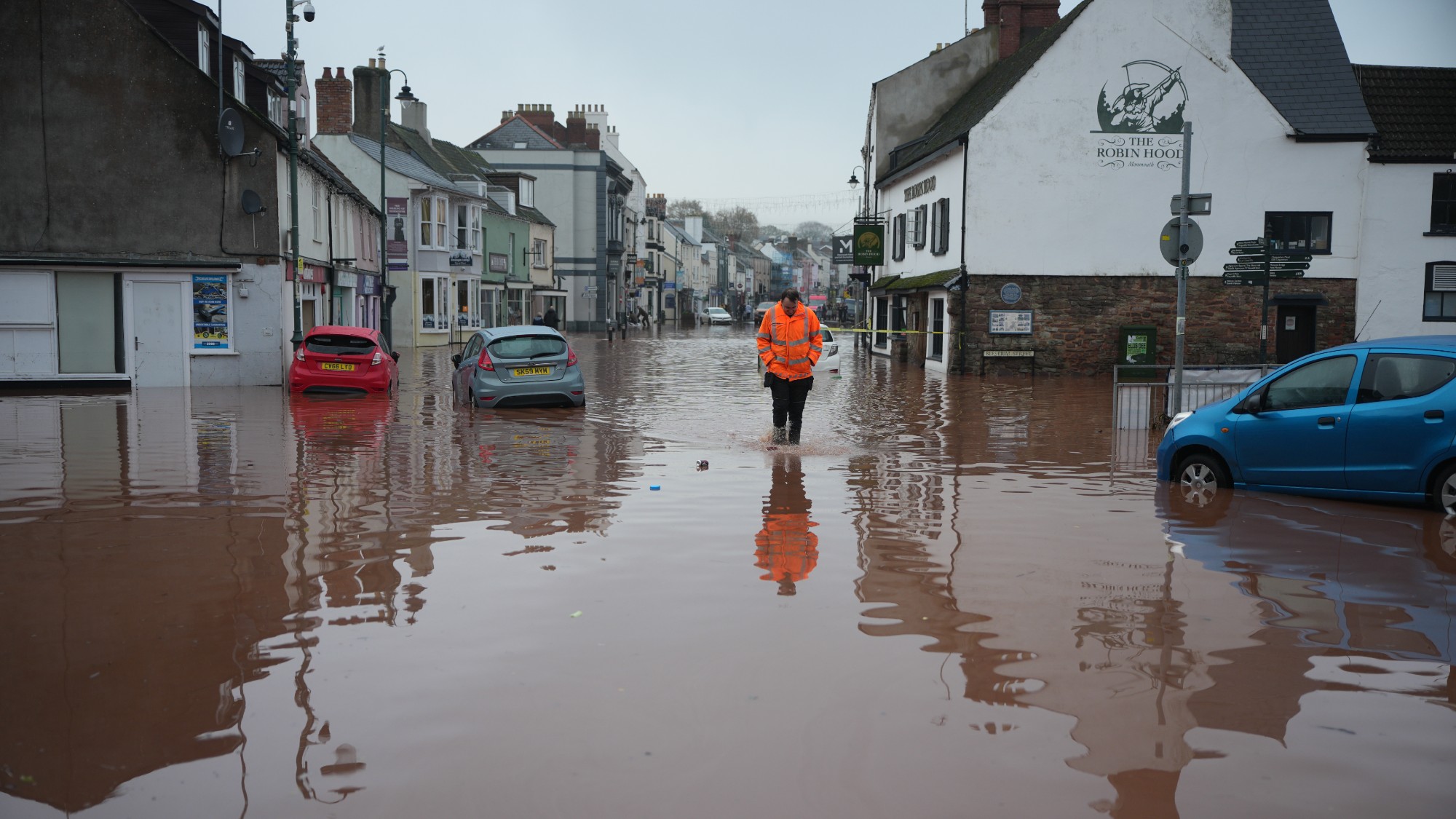National parks under siege
Climate change is taking a destructive toll on America’s treasured preserves of natural beauty.

Climate change is taking a destructive toll on America's treasured preserves of natural beauty. Here's everything you need to know:
Why are parks in trouble?
Even small changes in temperature, precipitation, and length of seasons can tip ecosystems out of their delicate balance. At America's carefully preserved national parks, extreme weather is triggering domino effects of disruption and devastation: thousands of ancient sequoias killed by California's wildfires; heavy rains leading to colossal landslides at Denali National Park in Alaska; rising sea levels causing the salinization of groundwater in Florida's Everglades, threatening endangered wildlife. Many of the 423 national parks are in arid, high-elevation regions, and thinner atmospheres and northern latitudes experience warming more rapidly. On average, park temperatures are up 2.2 degrees since 1895 — double the national rate. This crisis is unfolding while visiting America's "best idea" is more popular than ever, with nearly 300 million visitors last year as dozens of parks shattered attendance records. Last month, Yellowstone gave a glimpse of the future, when a massive flood forced thousands of visitors to evacuate and closed much of the park as surging waters swept away roads, cabins, and bridges, causing roughly $1 billion in damage. "I've heard this is a 1,000-year event," the park's superintendent, Cam Sholly, said, "whatever that means these days."
What happened at Yellowstone?
It hasn't been this warm there for 20,000 years. Winter at the nation's first national park is, on average, 10 days shorter and less cold than it was just 70 years ago. Summers are warmer and drier. This spring, a late snowfall followed by warming and 5 inches of rain combined to rapidly melt the snowpack and create a catastrophic flood. This was not a one-off. Rising temperatures are visibly transforming Yellowstone's iconic habitats. Many elk have decided to graze in private lands outside the park, bringing wolves with them. Snowpack is generally declining, reducing the flow of streams and rivers and allowing parasites and disease to flourish in Yellowstone's famous rainbow trout and mountain whitefish. Warmer temperatures allow the mountain pine beetle to better survive winter and reproduce longer. That native pest, in turn, destroys more whitebark pine, which is crucial to nutcrackers, grizzlies, and other wildlife.
The Week
Escape your echo chamber. Get the facts behind the news, plus analysis from multiple perspectives.

Sign up for The Week's Free Newsletters
From our morning news briefing to a weekly Good News Newsletter, get the best of The Week delivered directly to your inbox.
From our morning news briefing to a weekly Good News Newsletter, get the best of The Week delivered directly to your inbox.
Where else is warming evident?
The most vivid example might be the pristine, million-acre Glacier National Park in Montana, where scientists expect the namesake attractions to disappear entirely by 2100. In 1850, there were about 150 glaciers in the region. But over the past half century, the park's 26 remaining glaciers have shrunk, on average, by 40 percent, with some losing as much as 80 percent of their ice.
What about other parks?
Southern California's Joshua Tree National Park and its iconic prickly, twisted trees are seriously endangered by wildfires. A 2020 wildfire in the nearby Mojave National Preserve left behind what park management called "a graveyard of Joshua tree skeletons," with 1.3 million trees killed by the blaze. The trees flourish in a cooler, less hostile climate, and scientific modeling indicates Joshua trees could lose up to 90 percent of their current Mojave Desert habitat by 2070. Several species known to live among Joshua trees are visibly declining, including the cactus mouse and kangaroo rat.
What does the future hold?
By the end of the century, researchers estimate that, without aggressive mitigation, average annual temperatures across 62 major national parks could warm between an unthinkable 5.5 and 11 degrees compared with today. A recent study at Utah State University projects that by 2050 recreation on public lands could drop 18 percent in the increasingly sizzling summer — especially in the West and muggy South Atlantic — while rising 12 percent in the winter. As the impact of climate change accelerates, scientists are being forced to fundamentally rethink what conservation means: The National Park Service last year released a "Resist-Accept-Direct" plan to help park employees decide which species and landscapes to prioritize saving.
Can parks limit warming's harm?
Last year's federal infrastructure bill allocated $1.7 billion for national parks, including for climate mitigation efforts such as moving trails from flood zones. In Yosemite, rangers are removing thousands of dead and healthy trees to lower the risk of wildfires. Desperate times call for last-ditch measures, such as when biologists in Sequoia National Park last September wrapped the base of General Sherman — the largest known living tree, which is up to 2,700 years old — in protective foil as a wildfire approached. "Every single one of our national parks is suffering," said Stephanie Kodish, director of the climate change program at the National Parks Conservation Association. "We are literally making a choice to wipe out these things that are gems of our world, that are gifts for us to pass down."
A free daily email with the biggest news stories of the day – and the best features from TheWeek.com
How warming invites invaders
Invasive species are often better suited for high temperatures than the plant life that park ecosystems depend on. At Acadia National Park, for example, invasive, brambly shrubs thrive in warm weather and produce leaves early in the spring, creating shade that prevents young native trees from growing. Acadia is also plagued by an invasive insect, the red pine scale, which has wiped out almost every one of the park's red pine trees in recent years. In Yellowstone, non-native cheatgrass and desert madwort suck moisture out of the ground in early spring, depleting groundwater needed to sustain vegetation throughout the summer that grazing animals feast on. Cheatgrass seeds are thought to be brought in on visitors' shoes and cars. Invasive buffelgrass is threatening to destroy the towering cactuses in Saguaro National Park that have symbolized the rugged Southwest for thousands of years. Buffelgrass, a drought-tolerant African import, flourishes in extremely hot climates, forming a flammable carpet around saguaros. After blazes in recent years killed thousands of saguaros, hundreds of Tucson volunteers began pulling out clusters of buffelgrass by hand. Unfortunately, some saguaros are perishing anyway, amid conditions that are simply too hot and dry even for trees that evolved to thrive in the desert.
This article was first published in the latest issue of The Week magazine. If you want to read more like it, you can try six risk-free issues of the magazine here.
-
 Wilde Cambridge: home-away-from-home in a prime city spot
Wilde Cambridge: home-away-from-home in a prime city spotThe Week Recommends This laid-back aparthotel is the perfect base for a weekend of exploring
-
 The best alcohol-free alternatives for Dry January
The best alcohol-free alternatives for Dry JanuaryThe Week Recommends Whether emerging from a boozy Christmas, or seeking a change in 2026, here are some of the best non-alcoholic beers, wines and spirits to enjoy
-
 A lemon-shaped exoplanet is squeezing what we know about planet formation
A lemon-shaped exoplanet is squeezing what we know about planet formationUnder the radar It may be made from a former star
-
 Environment breakthroughs of 2025
Environment breakthroughs of 2025In Depth Progress was made this year on carbon dioxide tracking, food waste upcycling, sodium batteries, microplastic monitoring and green concrete
-
 Crest falling: Mount Rainier and 4 other mountains are losing height
Crest falling: Mount Rainier and 4 other mountains are losing heightUnder the radar Its peak elevation is approximately 20 feet lower than it once was
-
 Death toll from Southeast Asia storms tops 1,000
Death toll from Southeast Asia storms tops 1,000speed read Catastrophic floods and landslides have struck Sri Lanka, Indonesia, Thailand and Malaysia
-
 Can for-profit geoengineering put a pause on climate change?
Can for-profit geoengineering put a pause on climate change?In the Spotlight Stardust Solutions wants to dim the sun. Scientists are worried.
-
 How will climate change affect the UK?
How will climate change affect the UK?The Explainer Met Office projections show the UK getting substantially warmer and wetter – with more extreme weather events
-
 Can the UK do more on climate change?
Can the UK do more on climate change?Today's Big Question Labour has shown leadership in the face of fraying international consensus, but must show the public their green mission is ‘a net benefit, not a net cost’
-
 Did Cop30 fulfil its promise to Indigenous Brazilians?
Did Cop30 fulfil its promise to Indigenous Brazilians?Today’s Big Question Brazilian president approves 10 new protected territories, following ‘unprecedented’ Indigenous presence at conference, both as delegates and protesters
-
 Can the world adapt to climate change?
Can the world adapt to climate change?Today's Big Question As the world gets hotter, COP30 leaders consider resilience efforts